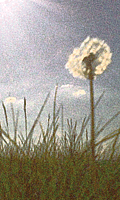


NEWS:
Almost no time left to hear November's shows streaming and vote in the 2025 Festive 50!
Artist Info
|
Luzmila Carpio  Image from Discogs  Luzmila Carpio is a representative of the autochthonous music and soul of Bolivian people. Luzmila Carpio is a representative of the autochthonous music and soul of Bolivian people.She learned the daily songs of the Quechua and Aymara indigenous peoples that inhabit the mountains and valleys of Northern Potosí in Bolivia as a small child. There she learned the meaning of sounds (the wind, the birds, the river, the echo of her own shouts to the winding cliffs) and voices (in rituals and fiestas of the people) and more importantly the connection between music and the well being of human beings and Mother Earth. Having migrated to Oruro in her early teens, she started expressing herself through her songs. Once she went to a radio station and sang the national anthem of Bolivia, for she knew not other songs in Castillian. Later on she was selected as the lead singer by a musical band that participated in a contest in Cochabamba. The popular songs she sang in this occasion were designed to meet the demands of the vast popular segments of the population, mostly descendants of indigenous peoples but who already lived in the cities and spoke Castillian. Afterwards, Siway Azucena, a melody composed by her inspired by the music of Northern Potosí, spread throughout the country. Not everybody knew who the singer was, but the song was a landmark in the quest of integration, for it was the first time that a true indigenous song entered the domains of the popular segments of society. Nonetheless, although her vocal quality and creativity guaranteed Luzmila a great amount of success among this the population, she was unrelententlessly searching both to reach more people with her music and to further the spirit of the Quechua people as a contribution to the country. Music was not so much a means to make money, which in any case was limited (compared to the amounts made by mega stars in Imperalist countries), rather to reach people and share with them the spirit of the Andes. Thus, contrary to the prevalent trend of modernization, she started looking deeper into the cultural and musical ways of the Andes and singing in Quechua, rather than Castillian. The main ingredient was not to please the audiences that kept growing but rather to use her music as an expression of rebellion against the predominance of wrong western ways of cultural progress over indigenous ones, as a way to show that this so far subordinated world also had a contribution to make, and as a way to build more harmonious relationships among the peoples of the world. In this quest, she authored and coauthored a number of songs for children: Ima sarata munanki ‘What kind of corn do you want’, Aylluman kutiripuna ‘Let us return to the community’ and many others. In rural schools, it is common to observe children singing these songs with real pleasure. Then she went to Paris where her musical evolution continued: from her popular songs in Castillian to her songs in Quechua to her Sacred Songs of international, universal quality. The aim, to foster peace amongst men and between man and nature. On April 21, 2006, Evo Morales appointed Luzmila Carpio as Bolivia's ambassador to France. Read more on Last.fm. User-contributed text is available under the Creative Commons By-SA License; additional terms may apply. Artist biography from last.fm Some other places to look for information: last.fm Discogs MusicBrainz |
